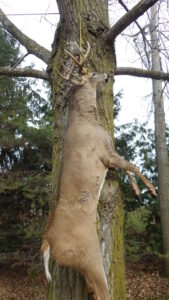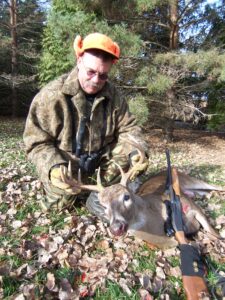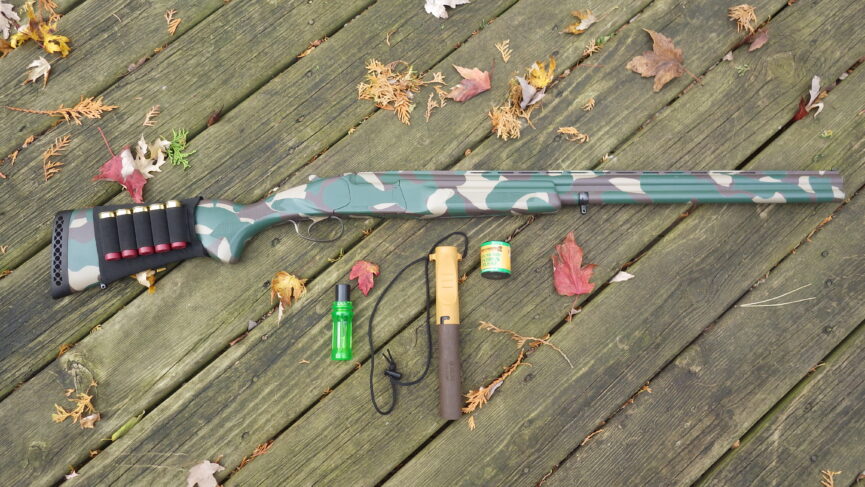Buckshot has a long history of being a useful and efficient element in the American deer woods which dates from the flintlock era until now. It turns smoothbore firearms typically used for firing birdshot at small game, wild turkeys and waterfowl into useful hunting pieces for bagging larger game, such deer and wild hogs. It remains to be a favorite round for hunting in southern states per swampy and thick areas where even seeing the quarry is a close-up, fast-moving encounter in dense cover, an atmosphere for which buckshot is ideally suited. Single projectiles are easily knocked off course in that environment, and I have yet to use a genuine “brush-busting” bullet or shotgun slug.
A friend of mine recently went on a wild hog hunt in Texas, where feral swine are considered literal vermin, and for good reason because they are very prolific and highly destructive to both the habitat and crops while churning up the ground like four-legged “rototillers”. My friend had been informed by his hunting guide to bring both a rifle and a shotgun, dependent upon the technique used and environment to be hunted. Having never used buckshot for hunting before, he made a point of patterning his 12 ga semi-auto shotgun with 3-inch “double-aught” and discovered it did a real dependable patterning job out to 50 yards with a modified choke.
During his Texas hunt when armed with his shotgun, he found himself in a deep brush-filled gulley while he and his companions were performing a jump and shoot hog-hunt. It turned out to be just the right spot because he soon could hear a noisy “hog stampede” headed his way, and hogs were soon whisking by like shadows in the dense cover and he would quickly fire at three hogs traveling fast in tandem at about 40 yards away (his being an avid waterfowler with the same shotgun, this was a second nature response) and he dropped all three dead in their tracks with one shot each. Wild hogs are lean and tough, with certain body parts covered in thick armor-like gristle, and my friend was very impressed with the distinct effectiveness during his first buckshot adventure.
Buckshot often gets maligned by those not in the know, of being a “deer-crippler”. Many of those I have talked to who were negative about using buckshot had never tried it, weren’t about to, and of course were getting their facts from hearsay and rumors. When misused, buckshot can be a deer-crippler, but so can any type of ammunition when pushing the limits regarding range and the viable ability of the shooter. Buckshot, when used at the ranges and in the environment for which it is intended, can be an awesome deer round, which I have seen firsthand and something I still depend upon for certain deer hunting applications.
Shotguns, especially, can be fickle about how they individually perform with certain types of shotshells, of which turkey hunters who take the time to properly pattern their shotguns are fully aware. I pattern buckshot in the same exact manner, especially to discover what choke works best. Full choke seems to get the thumbs-up a lot of the time, but that can be up to the shotgun being used. Double-aught (00) is the most popular shot-size, and for good reasons because it works. However, there are several .33 caliber pellets crammed together and forced down the barrel, and their exit out the muzzle can be like a couple big folks trying to go through a narrow doorway at the same time.
I’ve tested my share of full chokes with double-aught buckshot, and while some can get the job done, I have frequently encountered “fliers” which are pellets that stray erratically from the pattern. My best consistent patterns, on average, have been when using modified or improved cylinder chokes, but this again depends upon the shotgun and its individual preferences. Ammunition manufacturers have made great improvements to buckshot by using special wads and buffer materials to keep pellets better aligned and from crowding too tightly, as well as copperplated lead to prevent deformation while traveling down the barrel.

The effectiveness of .00 on a large-bodied buck can be very good
Yep, folks, I do have a special location requiring using buckshot during the upcoming firearms deer season (and beyond as well in December). It is a narrow, nasty and snarly stretch of cover featuring dense brush, briars and vines, and my longest shot through any small, somewhat open gap will be only 35 yards, but most likely less than that. A key feature to this location is that it offers a meandering, well-travelled deer trail, including regularly used buck-scrapes, and I am avoiding going anywhere near it until it is the perfect time to do so, especially with the wind direction being just right. My being old school in this sort of environment, means a blind isn’t required, and I’ll be a plain ‘ol “stump-sitter”, and in that dense cover it won’t be hard to blend in. I will also be using rut-related deer calls, which I have found can create positive results.
The shotgun I will be employing is my camouflaged 12 ga over and under fitted with modified and improved cylinder chokes, both of which decently pattern out to 50 yards (my personal maximum buckshot range) with Federal 3-inch double-aught (15-pellet) buckshot loads. The green “Hi-Viz” front bead on my shotgun is all that is required, and I’ll have two quick shots, if needed.

author examining his harvested whitetail
In this sort of environment, you don’t have a panoramic view of the surroundings like what can be had from a typical deer blind or raised-stand setting, but I find there is nothing boring about it at all, not to mention my being continually filled with anticipation. It pays to remain vigilant with eyes and ears, because matters can happen quite suddenly, such as deer materializing out of nowhere like magic. However, deer are sometimes not all that quiet in dense brush, by breaking and snapping twigs, readily announcing their approach. In either event, it always thrills the living dickens out of me!
Well, folks, having been there and done that, one extra item I will also have along in this special location is a machete to help clear the way when required. Being in true “buckshot territory”, means getting a downed deer out is going to be a tad interesting!
- Fickle weather during December deer hunting adventures - December 3, 2025
- Michigan’s most popular opening day – November 15th - November 23, 2025
- A missing dog found while anticipating opening day - November 23, 2025

